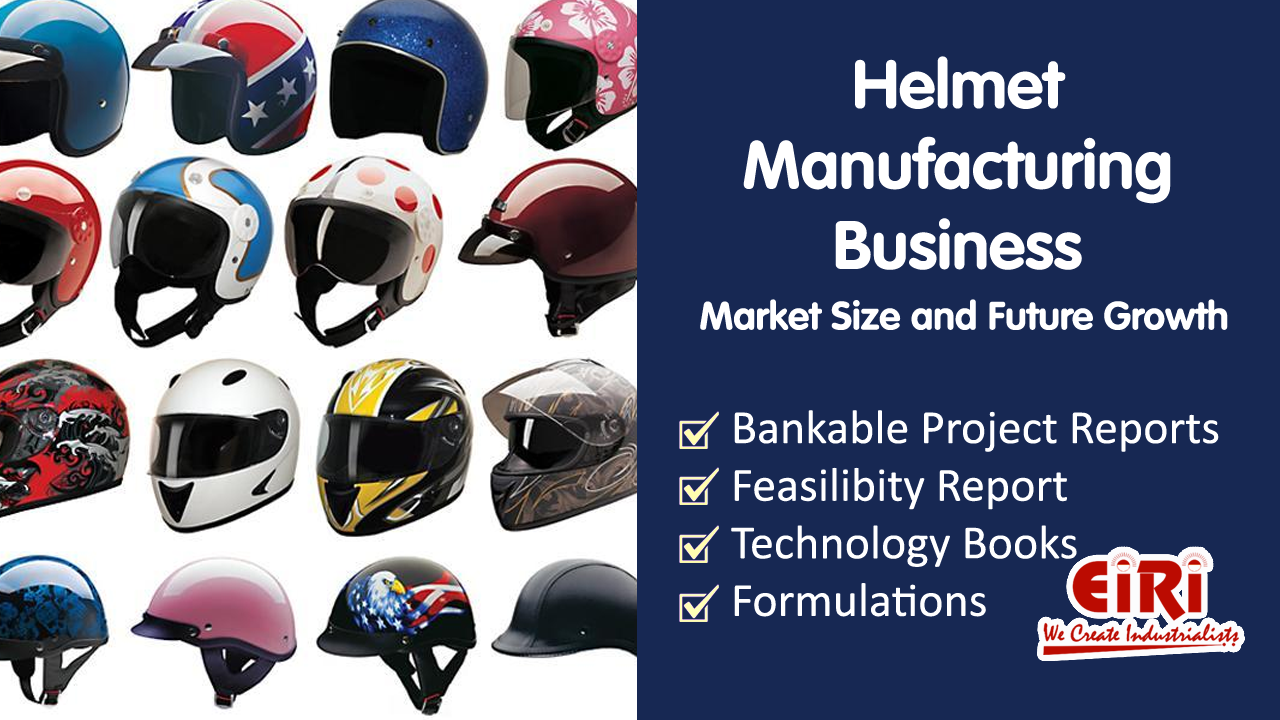Helmet Manufacturing Business
Overview of the Helmet Industry
A helmet is a piece of protective equipment worn on the head to protect it from injuries. They absorb the impact in case of an accident and protect you from lethal injuries. Studies reveal that motorcyclists are 26-times more likely to die in a traffic crash than those driving passenger cars. Wearing a helmet improves the chances of survival in such crashes by 42% and avoid 69% of injuries to the riders. There are stringent quality standards that helmets need to comply with in different countries before being available for sale in the market. These safety standards and regulations are reviewed regularly. Manufacturers should comply with the latest safety standards to ensure their helmets are the safest and protect their customers from lethal injuries.
Most helmets are manufactured using an injection molding process. Thermoplastic particles are fed into the plastic injection machine. These particles are heated and molted into a liquid form. This molten plastic fluid is then transferred inside the helmet mold. You get the helmet outside the outlet once the injection molding process is completed. Various molds can be designed depending upon the intricacies and complexities in the design. You can get highly customized helmets that are strong and durable through this manufacturing process.
China is the largest manufacturers of helmets with a total market share of 30.67% in 2015. Europe and the U.S. accounted for 23.35% and 17.37% of the market share. Other countries have a small global market share in the production of helmets. The global helmet market was valued at $5.13 billion in 2018 and is expected to reach $5.54 billion by 2025, with a CAGR of 1%. The premium helmet market is poised to grow at a CAGR of 6.81% during 2020-2025.
Future Scope and Demand
There has been a growing awareness of the importance of using helmets globally. The governments in most countries are also ensuring a conducive environment for use of helmets. These are the key drivers for the helmet industry. An increase in the disposable income and preferences of the customers has boosted the demand for premium helmets. Ever-increasing bike sales is another important factor contributing to the growing demand for helmets. In some regions, premium helmets are likely to register higher growth rates compared to regular helmets.
China was the largest consumer of helmets in 2015, accounting for 29.20% of the total global consumption. In 2019, more than 17 million bikes were sold in China, which contributed to the helmet demand and consumption. India is another major market for the helmet industry due to increasing disposable income that accounts for growing bike sales. The government is also particular about enforcing rules that make it mandatory for all bikers to wear helmets while driving. North America region is one of the largest consumers too, dominated by the U.S. However, during the period 2020-2026, the Asia Pacific region will experience the highest growth in helmet demand and sales. China and India will drive demand in the region.




